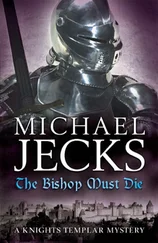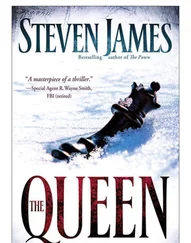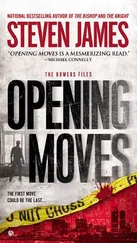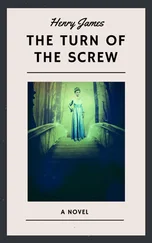Steven James - The Bishop
Здесь есть возможность читать онлайн «Steven James - The Bishop» весь текст электронной книги совершенно бесплатно (целиком полную версию без сокращений). В некоторых случаях можно слушать аудио, скачать через торрент в формате fb2 и присутствует краткое содержание. Жанр: Полицейский детектив, на английском языке. Описание произведения, (предисловие) а так же отзывы посетителей доступны на портале библиотеки ЛибКат.
- Название:The Bishop
- Автор:
- Жанр:
- Год:неизвестен
- ISBN:нет данных
- Рейтинг книги:4 / 5. Голосов: 1
-
Избранное:Добавить в избранное
- Отзывы:
-
Ваша оценка:
- 80
- 1
- 2
- 3
- 4
- 5
The Bishop: краткое содержание, описание и аннотация
Предлагаем к чтению аннотацию, описание, краткое содержание или предисловие (зависит от того, что написал сам автор книги «The Bishop»). Если вы не нашли необходимую информацию о книге — напишите в комментариях, мы постараемся отыскать её.
The Bishop — читать онлайн бесплатно полную книгу (весь текст) целиком
Ниже представлен текст книги, разбитый по страницам. Система сохранения места последней прочитанной страницы, позволяет с удобством читать онлайн бесплатно книгу «The Bishop», без необходимости каждый раз заново искать на чём Вы остановились. Поставьте закладку, и сможете в любой момент перейти на страницу, на которой закончили чтение.
Интервал:
Закладка:
Class had started five minutes ago.
There were a number of seminars running concurrently this morning, and though officially the National Academy course didn’t begin until Monday, the NA students who’d already arrived were invited to attend any of the lectures this week that they thought would be most helpful to them.
I’d been hoping Cheyenne might sit in on my class so I could thank her for taking Tessa home last night-at least that’s the reason I told myself. But when class began and she wasn’t in the room, I realized it was probably a good thing, since she has a way of monopolizing my attention and there was already plenty on my mind.
So, no videos today. Just discussion.
I’d kicked things off by telling my students that understanding the process an offender undertakes in planning and carrying out his crime is vital to eliminating suspects.
“Excuse me,” a woman in the front row said, two fingers flagged in the air. I’d met her earlier in the week: Annette Larotte, a National Academy student from Houston. A homicide detective. Tall-5'11". Brunette. Deep, reflective eyes.
“Yes?”
“What was number four? From last night?”
“Number four?”
“At the panel discussion you said there were four premises underlying geospatial investigation. But you only had time to list three before the discussion was cut short. What was number four?”
I quickly reviewed the first three: “Number one-timing and location. Most crimes occur in the offender’s awareness space. Two-rational decisions lead to the criminal act. Three-least amount of effort principle.”
When I paused to take a breath, Annette finished my thought for me: “Offenders try to save time and money just like everyone.”
I nodded. “Exactly. So here’s number four: progression. With each successive crime, offenders become more efficient and experienced, learn from their mistakes, develop tastes and preferences for specific activities over others. They also learn from other people-criminal associates, research, observations-and as they do, two things happen: they become more competent, and typically, they become overconfident, which can lead to carelessness.”
A few people took notes, Annette nodded her thanks to me, and I went on, “So to get us rolling today, tell me: what are the secrets to committing a perfect murder?”
The students began by noting the obvious: 1. take precautions to avoid leaving physical evidence, 2. contaminate the scene with other people’s skin cells, bodily fluids, or DNA to confound investigators, 3. dispose of the body outdoors where insect activity, scavengers, and the weather will help disperse and destroy physical evidence-or better yet, don’t allow the body to be found at all, 4. never murder someone you have a close relationship with, but rather choose someone whose disappearance will go unnoticed (runaways, transients, vagrants, hitchhikers, prostitutes, etc.).
Self-evident, rudimentary ideas.
I knew that the students in my class could do better, and I challenged them to go deeper.
And they didn’t disappoint me: 5. since the authorities begin by searching for people who would most likely be present at the time and place of the murder, it’s wise to counterintuitively break your habits rather than keep them when you commit the crime, 6. kill alone because as soon as you have an accomplice you have a loose end, 7. if possible, artificially, microscopically, fake the DNA evidence you leave. Ever since two years ago when Israeli researchers discovered how easy it is to do-that even first-year college biology students could do it-it’s become more and more common among educated criminals, and even with the Bureau’s technological advances over the last year, it’s still frustratingly hard to detect, 8. don’t kill close to your activity nodes (home, work, preferred recreational areas, and commercial businesses) or the travel routes between them.
“Good,” I said, building on the idea. “Very good. Most current research indicates that proximity of a series of crimes might be an even more accurate indicator of crime linkage than modus operandi or signature.”
Then a suggestion came from a man in the third row, a detective from Bangkok, a member of the Royal Thai Police: “Keep it simple.”
The door in the back of the room eased open and Cheyenne surreptitiously slipped into the room and took a seat in the back row.
Detective Nantakarn went on, “The more unique the crime, the more attention you’ll draw from investigators. And the more arrows will lead back to you.”
I nodded.
Annette suggested using an untraceable means of death, and because of the famous forensics dictum that whenever you leave a room you take something with you and leave something behind, the class debated about whether or not that was possible. However, I’d worked cases where the principle hadn’t borne out, so I let the suggestion stand.
“Anything else?”
Cheyenne lifted her hand, and I nodded to her.
“Don’t make your alibi airtight. Only a person with something to hide would remember the details of her whereabouts well enough to present a rock-solid alibi. The more perfect the alibi, the more suspicion it should draw.”
“Good.”
With Cheyenne we’d have another mind on Mollie Fischer’s murder. Another good mind… It shouldn’t be a problem clearing her to be part of the Joint Op program.
A quick look at the clock.
9:44.
I had a break scheduled at 10:00.
Yes. I would ask her then if she would like to join our team.
I was confident she would agree.
The two of us would work together again.
18
9:57 a.m.
“Time to get up.”
Brad gently shook the woman who, after being left alone in the pitch-black basement for nearly ten hours, had no doubt lost all sense of time.
She groaned.
“Come on, wake up.” He flicked on a heat lamp, and she cringed at the harsh, sudden light.
He smiled at her. He had some things to tell her, some advice for how to prepare for her death in just over five hours. “I thought we could talk for a few minutes,” he said. “Now that we’re alone.”
At the break, Cheyenne stepped into the hall before I could catch her, and hurrying after her seemed too middle-schoolish to me, so instead I fiddled around with my notes for a few minutes waiting for her to return, then decided to check my messages.
Missy Schuel had not returned my call.
I tried her number again but only reached an answering machine.
After evaluating things, I decided that if I didn’t hear from Ms. Schuel by noon I would look for someone a little more responsive to potential clients.
I did have one voicemail, however, from Tessa, bowing out of lunch: “It looks like things might take a little longer than I expected. Is it cool if we just connect tonight? That would rock. See you later.”
Brief. To the point.
All right.
I felt a little let down but not frustrated-it freed up the middle of my day, and without a trip to the city I wouldn’t need to rush out of my 11:30 meeting with Ralph. Maybe we could actually make some headway on the Fischer case.
The students were filtering back into the classroom.
Just before the end of the break, Cheyenne returned, followed closely by Annette. They sat in the back, and since we were about to start, I figured it would be best to wait until after class to speak with Cheyenne. Until then, it was back to getting away with murder.
Tessa found Paul Lansing waiting for her on the west steps of the Library of Congress’s Jefferson building.
For some reason, when she saw him, she thought of how Patrick would describe him: Caucasian. Late thirties. Brown hair. Beard. Six-foot-one. Two hundred pounds. Blue jeans, hiking boots, checkered shirt with the sleeves rolled up to the elbows.
Читать дальшеИнтервал:
Закладка:
Похожие книги на «The Bishop»
Представляем Вашему вниманию похожие книги на «The Bishop» списком для выбора. Мы отобрали схожую по названию и смыслу литературу в надежде предоставить читателям больше вариантов отыскать новые, интересные, ещё непрочитанные произведения.
Обсуждение, отзывы о книге «The Bishop» и просто собственные мнения читателей. Оставьте ваши комментарии, напишите, что Вы думаете о произведении, его смысле или главных героях. Укажите что конкретно понравилось, а что нет, и почему Вы так считаете.












